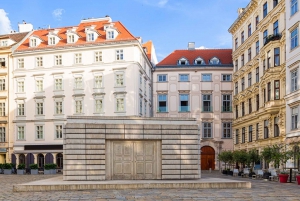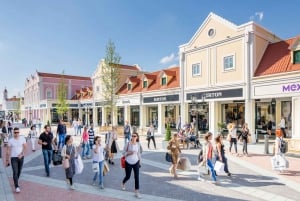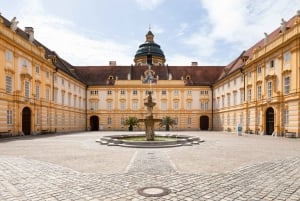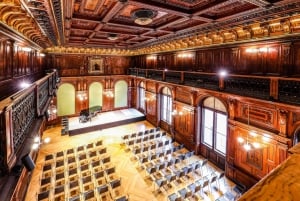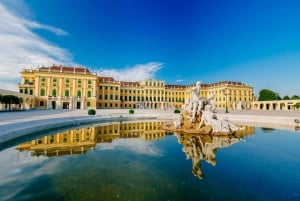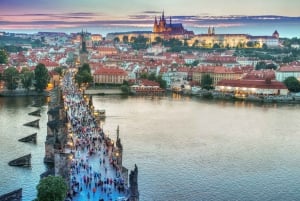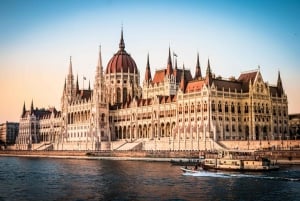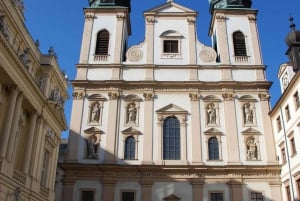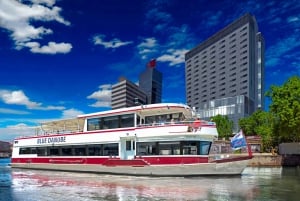Vienna's Art Nouveau Movement - Jugendstil
Vienna is the most important city of the "German led" art nouveau movement - in Vienna we call it Jugendstil. "To the Age its Art – to Art, its Freedom." This was inscribed above the portal of the Secession, one of the most famous art nouveau buildings in Vienna dating from around 1900.
Inspired by this motto, eminent Austrian painters, among them the famous Gustav Klimt, architects and designers created fascinating and beautiful art which is admired all over the world to this day. This group is called the Vienna Secession Group. This group was so influential during this period that today, wherever in Vienna you are, you will always encounter Jugendstil elements in our architecture and buildings. Have a look, you will be surprised....
Gustav Klimt was the most famous and well known artist and designer living in Vienna at that time. He headed and formed the Vienna Secession Group in the end of the 19th century - and surrounded himself with real progressive artists. This Group founded an new art movement (they called it Jugenstil) that was completely new and free from all the existing limitations and rules of the Viennese art establishment at that time. All art, design and craft was redefined - it went against of the overladen, romantic historism architecture style you can for example admire on many the Ringstrasse buildings today. The new Art Nouveau style in Vienna suddenly featured simple, elegant and geometrical features - using lots of elements from the Japanese designers. Vienna Jugendstil Art has today become a class of its own!
For those who want to visit a workshop/shop still producing Jugendstil design: In 1903 Josef Hoffmann and Koloman Moser, both also members of the Secession group, established the Wiener Werkstätte (Vienna Workshops): In this environment the important role of Jugendstil craftsmanship and its integrated approach to the design is still very much in place.
The most important museums to visit Jugendstil artists are:
Belvedere Museums: here you will find the works of Gustav Klimt with his golden paintings "The Kiss" and "Judith", as well as the masterpieces by Schiele and Kokoschka, both important austrian Jugenstil painters.
The Leopold Museum: a unique treasure-trove of Viennese Art Nouveau and the Vienna Workshop and the most-visited museum in the most fashionable cultural place in the city, the MuseumsQuartier: It houses masterpieces by the founder of the Vienna Secession movement, Gustav Klimt. But also it shows exhibits of the Vienna Workshop from Josef Hofmann to Koloman Moser - truly a great museum!
Church of St. Barromeo with its huge dome and incredible Jugenstil decorations.You will find this outstanding example of Vienna art nouveau architecture at the Wiener Zentralfriedhof - we have suggested this visit in our historical sights section.
The most important Jugenstil buildings in Vienna are:
The Vienna Secession building as mentioned above. Make sure you stop and have a look when you walk around the city centre. The museum inside is small and will quickly give you a good impression of the Secession Group and its history. But you should definitely linger around and have a close look at the buildings exterior aswell! It is a piece of art and really worth spending some time looking at!
The "Wienzeile" houses built by the most famous Austrian Jugendstil architect Otto Wagner, located at Linke Wienzeile 38 and 40, right next to the open market Naschmarkt. Otto Wagner himself owned these buildings and could therefore realize his ideas in the utmost way. It is obvious that both buildings, in spite of their different decoration, are meant to be an ensemble using in an effective manner the situation on the street corner. House N° 40 is completely covered by coloured tiles, that is why it is called the Majolica House. Following Wagner's ideas, beauty and function are combined since the façade can be easily cleaned and hardly damaged.
House ° 38 is particularly remarkable: The vivid plastic front of the corner gives a singular effect as well as the rich and luxuriant decoration with golden medallions. Have a look at the marvellous sculptures of the "calling women" - they are exquisite!
Also, the Church of Steinhof, another splendid example of Jugenstil art in Vienna. Again, we have highlighted this excursion in the historical sights section. If you are really into art nouveau we would highly recommend you following very interesting "Jugendstil Tour" in the Church of Steinhof: it takes place from April till October, every Wednesday from 2 p.m. The meeting point for this tour is the foyer of the Director?s Building - it is clearly marked, just follow the signs. Adults: € 12 , the duration is 1.5-2 hours. The tour can be organised in many different languages, just call +43 1 910 60-11007 for further info - you will love it!
Another great way to enjoy Vienna's Jugenstil landmarks is by visiting the metro stations:
Otto Wagner, the pioneering architect of Vienna's Art Nouveau aera, was the designer in charge of the construction of Vienna's metro ("Stadtbahn") stations around 1900 - today this Stadtbahn has been replaced by the underground, but the outstandingly beautiful stations have been preserved and are really worth noticing.
Wagner considered this railway project an important contribution to the appearance of the city and paid as much attention to the large structural elements, such as bridges and station buildings, as to the small details, such as the station's railings, lamps, signs and inscriptions. You will be truly amazed when you have a close look.
The finest example of these metro stations is the "Pavilion of the Most Exalted Imperial and Royal Court" - built for the exclusive use of the Emperor and his Court. Today the station is called Hietzing (one metro stop after Vienna's top attraction Schönbrunn Palace) - you will be mindboggled when you see it. Other examples just as impressive are the Stadtpark or Karlsplatz metro stations.



